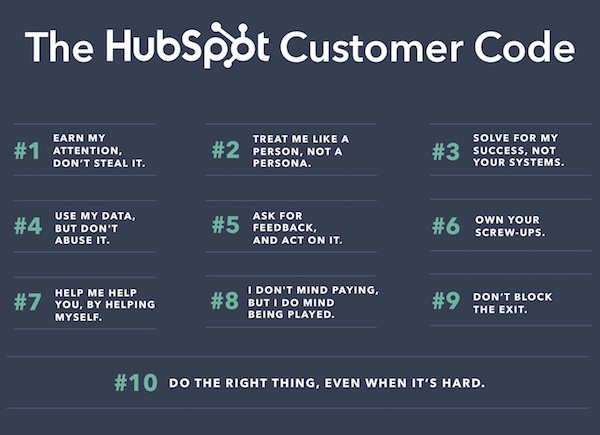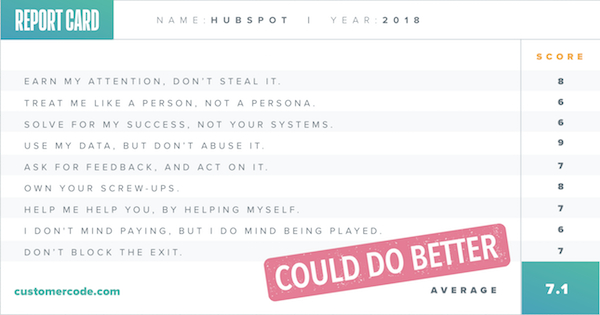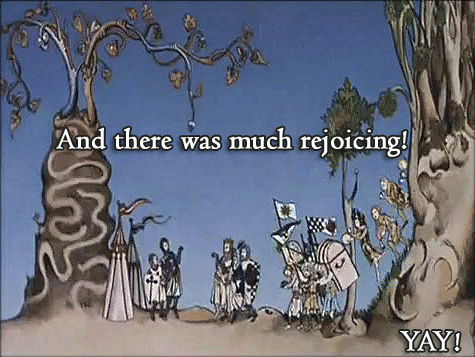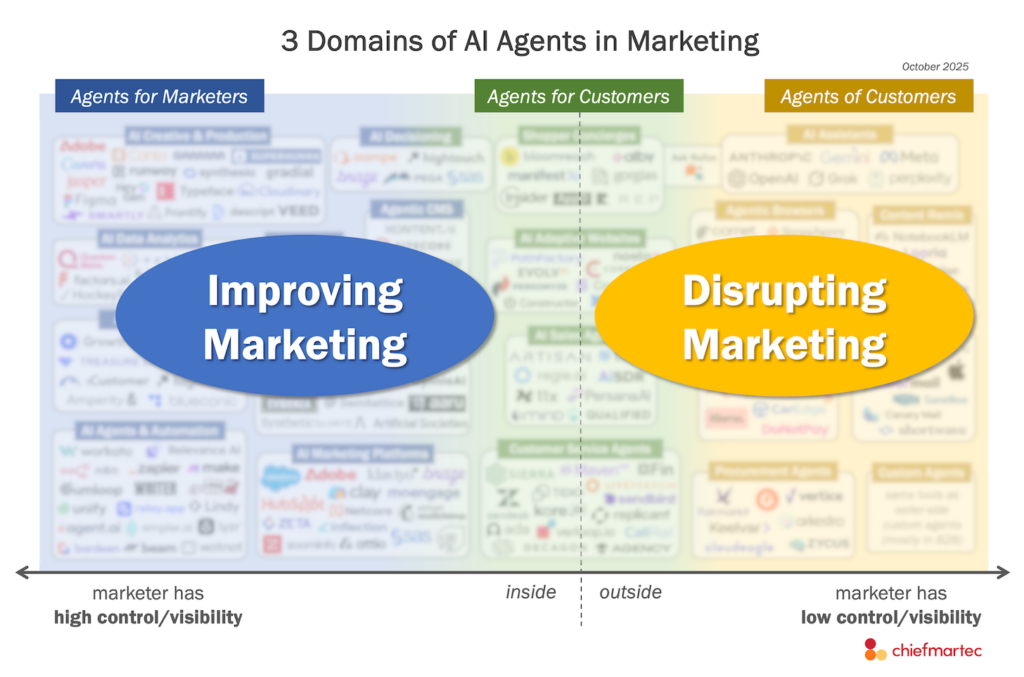A ton of marketing technology is sold today as the solution to delivering better customer experiences. Of course, martech doesn’t automagically create great customer experiences any more than a food processor automagically makes you a great chef. It depends on how you wield it.
And, frankly, the most important elements of customer experience have nothing to do with technology at all. They have to do with the choices a company makes about how to treat its customers. These choices are way harder than any martech integration challenges or other in-the-weeds scapegoats that companies claim hold them back from delivering better customer experiences.
The irony is that this applies to martech companies themselves too.
A few weeks ago, I read The Enterprise Almanac, a B2B enterprise report, produced by the VC firm Work-Bench, kind of in the vein of Mary Meeker’s iconic yearly Internet Trends deck. (It came to my attention because of a TechCrunch article that cited them as predicting the end of SaaS is coming — a fascinating albeit hyperbolic thesis which I’ll discuss another day.)
One of their most interesting observations (slide 115) was how the pendulum of enterprise software sales has swung over the past 20 years:
- Before SaaS, in the 1990’s, old-school enterprise software sales was infamous for multi-year contracts and aggressive cross-sell, account penetration tactics.
- The initial rise of SaaS in the early 2000’s sought to disrupt that — Salesforce’s famous “no software” slogan — with free trials, monthly subscriptions, and friendly telesales.
- Fast-forward to 2018, and now many of the major enterprise SaaS companies sell with multi-year contracts and aggressive cross-sell, account penetration tactics — the very things that customers disliked about old enterprise software sales that SaaS originally promised to free them from.
This is one of the reasons why Work-Bench believes that “the end of SaaS” could be near, as customers get fed up with that arm-twisting and seek alternatives.
Work-Bench hypothesizes one alternative could be a move to roll-your-own applications built entirely from microservcies, none of which have market power over you. I think that’s a little extreme — although there is some truth behind how microservices are changing the martech environment. But again, that’s a discussion for another day.
A simpler alternative is for martech companies to simply stop behaving that way.
As if on cue, two different martech companies have publicly leaned into that idea in the past couple of weeks:
- HubSpot published its Customer Code
- CaliberMind launched the Unmartech Manifesto
The HubSpot Customer Code is broader than martech, as it aims to capture the elements of customer-centricity that almost any business should address. (Disclaimer: in case you don’t already know, I’m also the VP of platform ecosystem at HubSpot, but as you’ll see, this isn’t really about HubSpot per se.)
By the way, these are some great examples of the “humanize” dimension of the 4 forces of marketing operations & technology that I’ve been talking about lately and will be covering at the upcoming MarTech conference.
But two points of the Customer Code that particularly resonated with me in the context of martech sales were:
- #8. I don’t mind paying, but I do mind being played.
- #9. Don’t block the exit.
To live up to #8, your pricing and discounts need to be open, clear, and fair. If two different customers can finagel two different prices for the exact same thing, that sucks. If it’s hard for customers to know what the true price of something will be — if “hidden” fees keep popping up in unexpcted places — that sucks.
And to live up to #9, you need to let people cancel when they want. Lock-in sucks. “Like-in” is infinitely better. Customers should stay if — and only if — they enjoy and value your service. If they want to leave, but you’re artificially forcing them to stay, against their will, you can’t claim with a straight face that you’re all about an awesome customer experience.
Being held hostage is not an awesome customer experience.
By the way, HubSpot isn’t holding itself up as a perfect example of this code. The deck includes a report card of HubSpot’s own grades on each of these 10 points, and there’s clearly need for improvement — including points #8 (score: 6/10) and #9 (score: 7/10).
To improve, HubSpot needs to makes changes that, on the surface, would seem to be against its own financial interest. Should a company try to make it easier for customers to cancel? Yet that is exactly what HubSpot is advocating — and committing to pursue itself.
Dharmesh Shah, the architect behind the code, wrote a post on Medium to accompany its release, Growth Alone Doesn’t Interest Me Anymore, that embraces this goal:
We’ve reduced our cancellation notice window from 45 days to 10 days, with the goal of getting it to 0. This policy made sense for us (helped us forecast renewals), but it made no sense to our customers and was one of out top escalation issues. That’s a sharp edge that has to go.
We’re also rolling out functionality that will allow more customers (eventually all of them) to cancel “in portal.” We want to be more like Spotify and Netflix, companies that make no attempt to block the exit, and are as easy to end an agreement with as they are to start one.
Don’t misinterpret. It’s not about wanting customers to cancel. A company should work like hell to give customers every reason to want to stay — but through giving them value and delivering a great customer experience. Like-in, not lock-in.
And if a customer decides they want to leave, let them.
The enlightened argument is that this is in the company’s best financial interest. Because assuring people that they always have an easy way to leave de-risks adoption for customers — and signals the company’s confidence in the value of its solution. And even in cases where a customer chooses to leave, they hopefully still think the company treated them well and will pass that along in word-of-mouth.
I know, I work for HubSpot, so I’m biased, but I absolutely love this. When was the last time a major SaaS platform you depend on made it a company-wide initiative to make it easier for you to cancel whenever you want?
And it’s not only HubSpot.
The Unmartech Manifesto championed by CaliberMind echoes many of these same ideals. They have their own “10 Commandments” of how marketing technology companies should treat their customers. It includes the ability to get out at any time given 90 days notice — hey, for enterprise software, that’s pretty close to “cancel immediately” — and no sly yearly auto-renewals that attempt to slip by unnoticed.
They’re committing to live by these commandments themselves, but they’re also encouraging other martech companies to commit to them as well.
There are many challenges that marketers face with the large marketing technology landscpae. But one advantage they should increasingly have is benefiting from competition between these martech vendors. And if one of the key dimensions of competition becomes “who can deliver the best customer experience” — including customer-friendly sales and retention policies — there will be much rejoicing.







The SaaS sales model has become so highly trained and regimented that SaaS sales people are rapidly becoming the new car sales people. One marketing automation company was abysmal.
Hey Scott, thanks for sharing. You’re absolutely right about “don’t block the exit.” I’m still hearing lock-in anxiety all the time in my conversations with buyers. It gets to understandably irrational levels. Even giving 4 of 15 categories of a complex stack to one vendor seems risky to some despite the efficiencies it provides. I agree that making the customer’s data and processes as portable as possible should not be seen as a weakness. It should be a defacto RFP requirement before a buyer even takes a sales meeting. Lack of portability is a lack of confidence in your products and services.